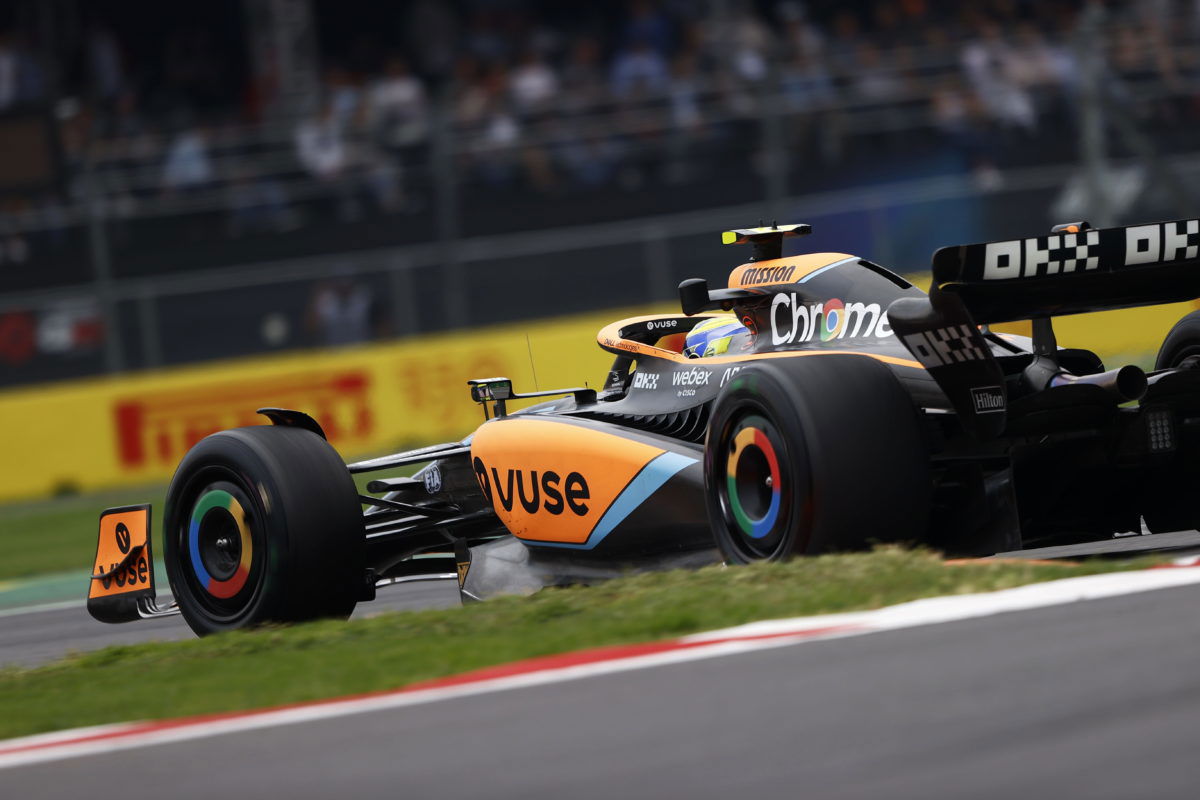

Formula 1 drivers have voiced their concern to Pirelli over the planned removal of tyre blankets from the sport in 2024.
A ban on electric warmers was mentioned as the sport announced it would move to larger, 18-inch wheels for the 2021 season (which was delayed to 2022).
The plan to remove the blankets has now been pushed back to 2024, though drivers have expressed their concern following tyre testing at the two most recent grands prix.
At the United States Grand Prix last month, drivers sampled prototype versions of next year’s harder compound rubber, including reduced preparation temperatures.
In Mexico City last weekend, they experienced the softer end of the range, with changes to the way teams were allowed to warm them before use.
Teams are currently allowed to warm tyres up to a maximum of 70 degrees Celcius, though that was reduced to 50 degrees in Austin during Free Practice 2 with a heating period of three hours.
“We’re going to have a lot of crashes,” warned Max Verstappen when asked for his thoughts on the reduced use of tyre blankets following the opening test in Austin.
“Also, your tyre degradation is going to be completely different because your tyres are very cold, you’re sliding around a lot in the first few laps – your tyre pressures are going to go through the roof.
“So your tyres are going to deg a lot more and, at the moment, I don’t really enjoy but I mean a lot of drivers say the same.
“We have to of course find a solution to that.
“Austin is still a track where you can easily switch on the tyres because of the high-speed cornering, but if you go to like a track like a street circuit, Monaco, can you imagine on half-half conditions? I think is going to take like half the race before you have temperature in your tyres.
“You have a lot less power – these cars are very heavy as well,” he added when asked why other categories could get away without warmers
“I’ve tried it and it’s just really almost impossible to drive.
“In my private time I drive a GT3 car with no tyre blankets, but these cars are a lot more forgiving and it’s a lot easier to manage than these kind of cars, because if you go on the power a little bit too much, with the power you have from the engine, I mean it can be a big, big issue.”
Verstappen was not a lone voice, with others also raising their concerns.
“This was like the best possible conditions to have these tyres; super warm [ambient temperature], hot track temp, high-speed first sector to get the temp in, and they were not nice,” opined Lando Norris of the United States GP experience.
“So easy to front lock, so easy to rear lock, completely unpredictable.
“Imagine going to a much colder racetrack, or if it’s a little bit damp or something…
“Everyone’s going to shunt the car at some point.”
In response, Pirelli changed the way it heated the tyres for last weekend’s Mexico City Grand Prix tyre test, where it again took over Free Practice 2.
The temperature of blankets was increased back to 70 degrees, though the warming cycle reduced to two hours as opposed to three.
It resulted in the tyres reaching a similar level of temperature while the amount of energy used to do so – a key consideration in the drive to eliminate blankets – was reduced.
“In terms of the tyres, it’s quite hard to compare because we did a harder tyre in Austin at a lower blanket temperature,” began Andrew Shovlin, Mercedes’ Director of Trackside Engineering in Mexico City following another Pirelli tyre test.
“What we had this weekend is very similar to what we’ve run before.
“I think the challenge of taking a car that’s this fast, this powerful, that has this much downforce and making a blanketless tyre is incredibly difficult.
“It’s very easy to look at the Formula 2 series and say, ‘Well, they do it’, but the energies involved are enormously higher when you know, we’re doing around 20 seconds quicker at some circuits.
“That challenge for Pirelli is very, very difficult. It requires a lot of steps of technical development.
“And the sport has to be very careful that the legislation on blankets does not get ahead of the the rate at which we can develop the tyres,” he warned.
“Pirelli’s problem is not a static one. These cars have got more downforce in a straight line than the cars that we used to have; the high speed load’s very, very high, and the teams are constantly working to add performance.
“For Pirelli to just keep up with that constant development is difficult.
“So you would say yes, of course you can make a blanketless tyre, they probably could give us one straight away
“But that tyre would not lead to good racing. It would not allow the drivers to push as hard, you would end up with very high tyre pressures and a significant loss of grip.
“It’s a case of balancing the needs of the sport along with environmental concerns.
“They’re all being addressed but the big one is making sure that we don’t end up with a worse sport because we’ve led it with the legislation on what we want to achieve.”





















Discussion about this post